Photography – alt version
Overview
Photography is one of the best tools to communicate a sense of place. It often creates the first impression with its visual presence. Thoughtful and carefully chosen photography can transform a marketing piece and can become an effective way to communicate about Carolina.
It is important to use professional photography in University materials whenever possible. For help coordinating a photo shoot, connecting with a freelancer or consulting about any projects or workshops, contact Amanda Zettervall, director of strategic resources, at (919) 843-4967 or azettervall@unc.edu.
Featured Photos
Tone and Mood for University Photography
Photography should display the diversity of interests and activities at the University. It should vary in place and subject matter and should reinforce Carolina’s friendly, open culture and academic preeminence.
To capture the right tone and mood in your materials, keep these guidelines in mind:
Examples
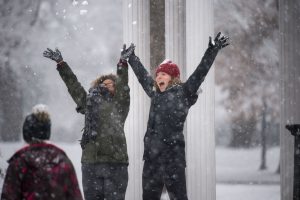


Examples



Examples
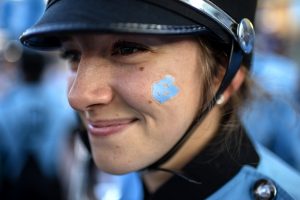
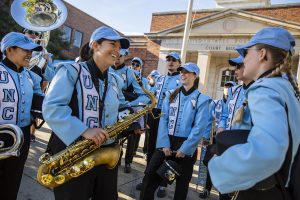
Examples



Examples


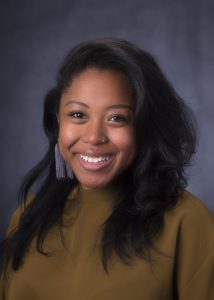
Examples
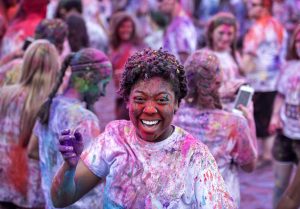

Examples



Foundational Steps to a Great Photo
Examples
Lorem Ipsum

Lorem Ipsum

Great lighting can be created by setting up artificial lights or by utilizing the natural daylight—or a combination of both. It is best to avoid direct sunlight in order to reduce harsh shadows, particularly on faces.
Examples
Lorem Ipsum

Lorem Ipsum

The Rule of Thirds is a compositional guideline for creating well-balanced photographs. Utilizing this rule adds visual interest to photographs by placing the subject matter in an area where the viewer’s eyes are naturally drawn. An example of the Rule of Thirds grid is illustrated below.
Examples
Rule of thirds grid

Example using rule of thirds

When you have an opportunity for a great shot, it is a good idea to capture it both vertically and horizontally. This will ensure plenty of options later in using the image in places with different proportions and orientations.
The focus of a portrait should be on the subject. Try to avoid complicated lighting setups and backgrounds. Instead, err on the side of simplicity so that the image looks as natural as possible.
Photography Resources
The Office of University Communications provides a photography and videography database in order to help enhance materials created for the University. Please note that no image or video may be used for commercial or advertising purposes without written permission from the University of North Carolina at Chapel Hill.
For more information, contact Jon Gardiner, University photographer, at jon.gardiner@unc.edu or (919) 962-6468.
Consent Guidelines
A consent form is needed in situations where people are being asked to perform an activity they are not already engaged in. Additionally, anytime a minor is photographed, a consent form is required. The University’s consent form [insert link] is available for download.

